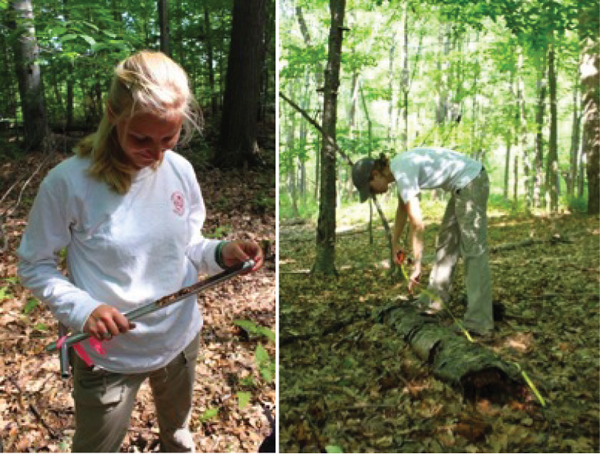Thursday 4pm, Hutch 316
We have a couple of special presentations this week. Annalise Kjolhede (left) and Julia Cosgrove (right) will present overviews of their undergraduate honors theses.
Annalise will be presenting her work on the soils and geology of Monroe County entitled “The Influence of Landforms and Soils on the Vegetation of Monroe County, New York.”
Julia will be presenting her work on forest structure and coarse woody debris entitled “Stand Structure and Down Woody Debris in Beech-Maple Old-Growth Forests of the Rochester Area.”


